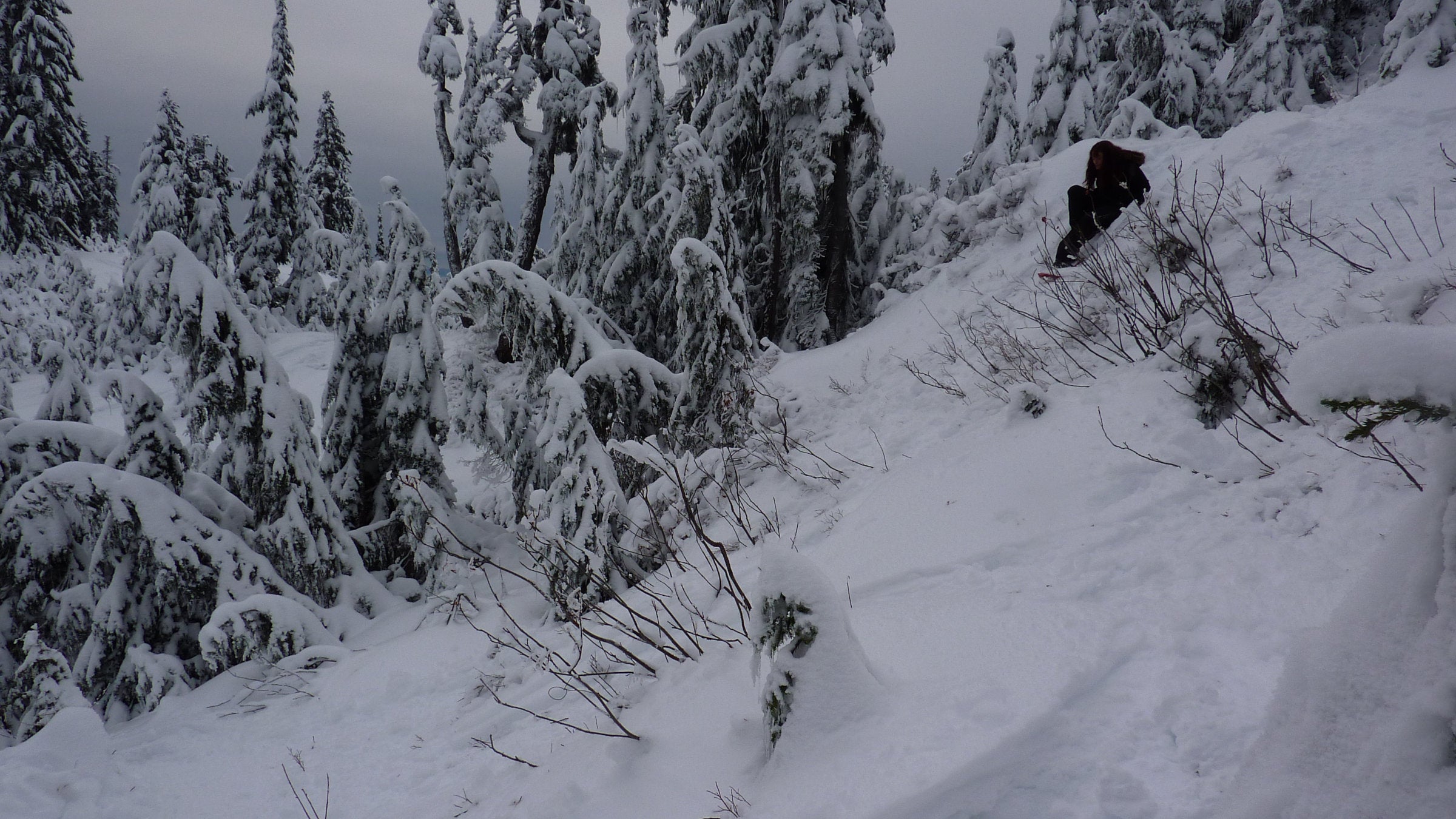Two Hikers Injured in Separate “Bum-Sliding” Incidents on Popular Vancouver Mountain

Hollyburn in winter, shot in 2011 (Photo: kcxd / Flickr via CC-Attribution)
Early this week, Vancouver’s North Shore Rescue received a call about an injured hiker on nearby 4,350-foot Hollyburn Mountain. The hiker had hit an icy snowbank with their foot while glissading —or “bum-sliding,” as the group’s incident report termed it—down the peak. In what must have felt like deja vu, a second rescue team took to the slope the next day after another, nearly identical incident, prompting officials to issue warnings to hikers against taking a shortcut down snowy mountains
In the first incident, the hiker was well-equipped for the peak’s snowy and icy conditions, donning proper footwear and foot traction. Rescuers located the hiker, provided medical care, and extracted her via sked stretcher.
“This individual was lucky to have only injured their ankle: in terrain where the slope is large, or where cliffs or other obstacles (trees, rocks, etc) are at the bottom, the ability to stop ones self at all times is essential,” North Shore Rescue members wrote.
The second case, the team wrote, seemed like a near mirror-image of the first. The injured hiker was also wearing proper footwear and traction. The events surrounding his injury are less clear, however: Officials are unsure whether the glissading was intentional or accidental. The hiker either hit uneven terrain or dug his crampon into a slope, getting stuck in place while his momentum pulled him downwards, resulting in what rescuers suspected was a leg fracture.
Although glissading—a fancy term for sliding down a snowy slope on the seat of one’s pants—is a popular way of descending amongst winter hikers due to its speed and convenience, the activity poses some serious risks. In incidents like these, hikers may pick up speed too quickly and lose control, forfeiting the ability to slow down or stop.
“These slides should only be performed by individuals carrying an ice axe—and with the knowledge and experience on how to self-arrest your descent,” the team wrote.
Snowpack in the area in which these hikers were glissading is currently compacted and very slippery, and will likely remain so given the temperatures in the region. Additionally, snowpack levels are below average. The result, the team wrote, is that, “terrain features (bumps, dips/holes, etc) that are typically filled in by this time of year are not.” The number of people glissading is only making the problem worse, the team added, leaving the surface slicker and slicker.
“All of this is to say that recreationalists must take much care when hiking on slippery ground,” the group concluded. “It is typically much harder going “down” than “up”. Having solid footwear and traction devices (crampons, trail crampons, etc.) is key, but as these last two rescues have demonstrated, are not necessarily enough.”
How to Glissade Safely
While “bum-sliding” down a mountain in winter can be risky, it’s possible to do it (relatively) safely when the conditions are good. Learn how to take the express train down with these tips from Colorado Mountain Club instructor Rick Casey.